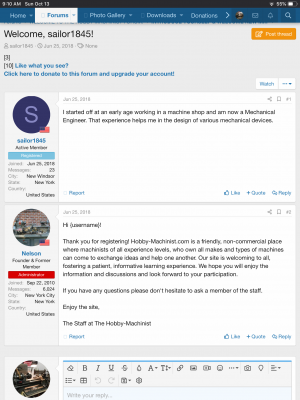- Joined
- Jan 2, 2019
- Messages
- 7,160
Like I said before there are other places to express your feelings sailor1845. Sorry about your teeth and kneecaps but any manufactured item can be defective and good safety procedures should keep you out of harms way when something lets go.
Please stick with this forums rules and etiquette, we appreciate the way things are run here
Please stick with this forums rules and etiquette, we appreciate the way things are run here



